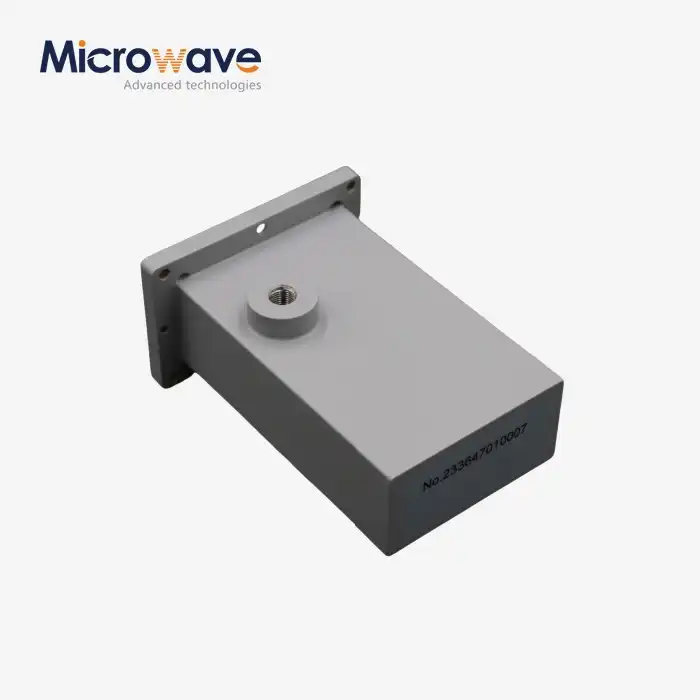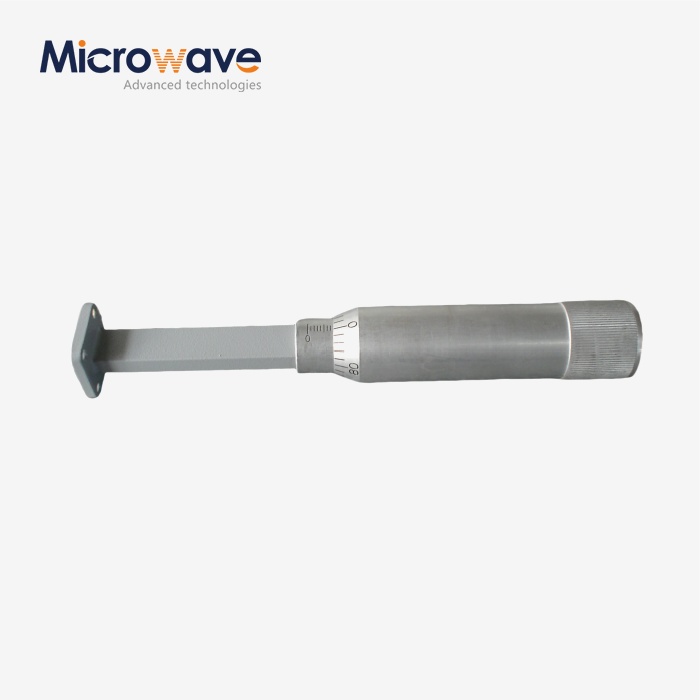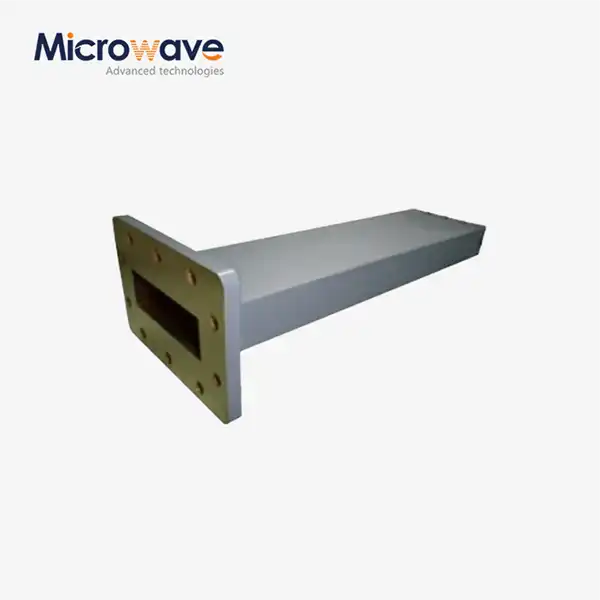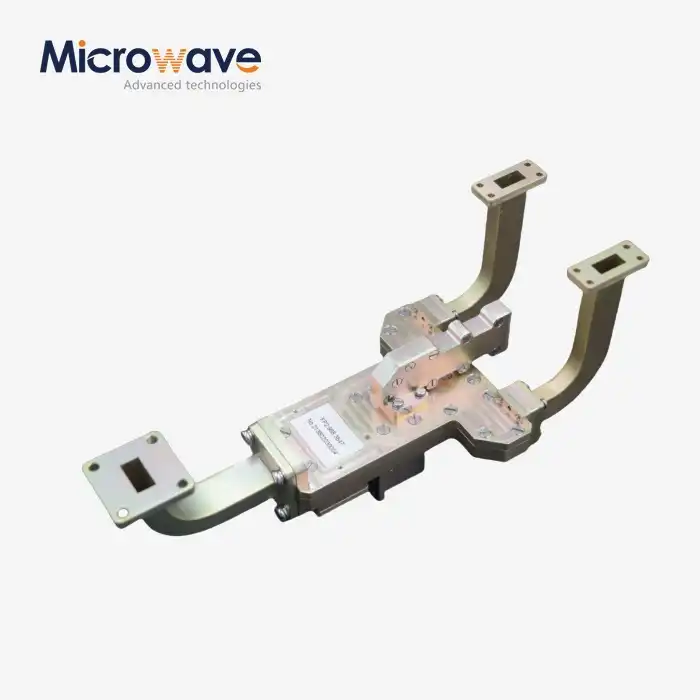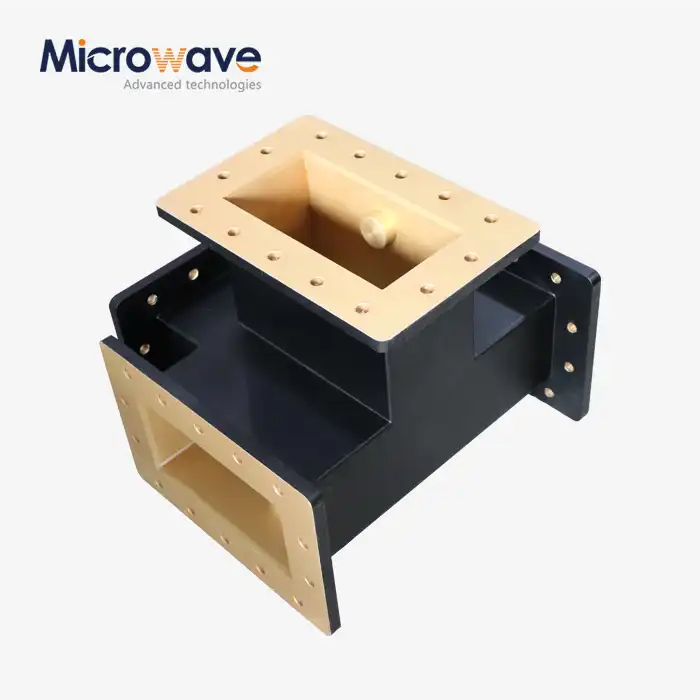What are the differences between a Waveguide Unmatched Termination and a well-matched termination in terms of performance?
In the field of microwave engineering, the selection of appropriate waveguide terminations is critical for system performance. Waveguide terminations help prevent unwanted signal reflections that can degrade system functionality. While both waveguide unmatched termination and well-matched termination serve the purpose of absorbing signals at the end of a waveguide, they exhibit significant differences in performance characteristics. Waveguide Unmatched Termination typically operates with a higher Voltage Standing Wave Ratio (VSWR) of 1.2-2.0, deliberately allowing a controlled amount of reflection to occur. This contrasts with well-matched terminations that aim for minimal reflection with VSWR values typically below 1.2. The performance differences between these terminations affect signal stability, power handling capabilities, and their suitability for various applications across the microwave frequency spectrum.
Understanding the Fundamental Differences in Reflection Characteristics
VSWR Specifications and Their Impact on System Performance
The primary distinguishing feature between Waveguide Unmatched Termination and well-matched termination lies in their VSWR specifications. VSWR is a critical parameter that measures the efficiency of RF power transmission through a transmission line. Waveguide Unmatched Termination, such as those manufactured by Advanced Microwave Technologies, typically feature VSWR values ranging from 1.2 to 2.0 with an accuracy of VSWR+0.02 across the full waveguide bandwidth. This higher VSWR value indicates that these terminations intentionally allow a certain degree of signal reflection. This controlled reflection can be advantageous in specific testing scenarios where engineers need to evaluate system response under non-ideal conditions. The ability to select specific VSWR values within this range provides engineers with flexibility to simulate various operational conditions, which is particularly valuable in research and development environments. By contrast, well-matched terminations strive for VSWR values as close to 1.0 as possible (typically below 1.2), indicating nearly perfect absorption of incident waves with minimal reflection. When implementing Waveguide Unmatched Termination in a system, engineers must account for the intentional reflection characteristics to ensure proper system performance, especially in high-frequency applications up to 110 GHz that Advanced Microwave's products support.
Reflection Coefficient Analysis Between the Two Termination Types
The reflection coefficient, which directly correlates with VSWR, provides another perspective on the performance differences between these termination types. For Waveguide Unmatched Termination, the reflection coefficient is deliberately set higher to create specific impedance conditions. This parameter is calculated as (VSWR-1)/(VSWR+1), which means an unmatched termination with a VSWR of 2.0 would have a reflection coefficient of approximately 0.33, indicating that about 33% of the incident power is reflected. Advanced Microwave's Waveguide Unmatched Termination provides precise control over this reflection, maintaining accuracy across the entire waveguide bandwidth. This controlled reflection creates predictable standing wave patterns useful for testing system robustness. The company's high-quality construction ensures that these reflection characteristics remain stable over time and across varying environmental conditions. Well-matched terminations, conversely, aim for reflection coefficients approaching zero, ideally reflecting less than 5% of incident power. The substantial difference in reflection properties between these termination types makes them suitable for different applications within microwave systems, with unmatched terminations often preferred in specific testing scenarios where engineers need to evaluate equipment performance under varying reflection conditions.
Phase Characteristics and Standing Wave Formation
Beyond magnitude differences in reflection, the phase characteristics and resulting standing wave patterns differ significantly between Waveguide Unmatched Termination and well-matched alternatives. Waveguide Unmatched Termination creates predictable standing waves within the waveguide structure due to its higher reflection coefficient. These standing waves represent the superposition of incident and reflected waves, creating distinct patterns of high and low field intensity along the waveguide. Advanced Microwave's Waveguide Unmatched Termination is designed to provide consistent phase characteristics, ensuring that these standing wave patterns remain predictable across operating conditions. This predictability is essential for applications requiring controlled impedance conditions, especially in testing and research settings. The company's products support frequencies up to 110 GHz while maintaining these phase characteristics, making them suitable for both commercial and military-grade communication systems. The ability to generate controlled standing waves allows engineers to test system performance under specific impedance conditions, which is particularly valuable for aerospace and defense applications where system reliability under various operating conditions is paramount. Well-matched terminations, by contrast, aim to minimize standing wave formation entirely, creating a more uniform field distribution throughout the waveguide structure.

Application-Specific Performance Considerations
Signal Stability in High-Frequency Communications Systems
In high-frequency communications systems, signal stability represents a critical performance metric that is directly influenced by termination choice. Waveguide Unmatched Termination offers unique advantages in certain scenarios despite its higher reflection characteristics. Advanced Microwave's Waveguide Unmatched Termination provides signal stability benefits through its precisely controlled reflection properties, which remain consistent across the entire operating bandwidth. This consistency is crucial for applications where predictable system behavior is more important than achieving minimal reflection. In satellite communications systems operating at extremely high frequencies, the ability to maintain consistent performance across environmental changes becomes particularly valuable. Advanced Microwave ensures this stability through high-quality materials and construction techniques that minimize performance drift over time. The company's Waveguide Unmatched Termination is engineered to deliver consistent performance even in demanding applications where temperature variations and mechanical stress might otherwise affect signal stability. By contrast, well-matched terminations typically offer superior performance in applications where absolute signal stability is paramount, such as in precision measurement systems. However, their performance may degrade more significantly when operating conditions deviate from ideal, whereas the controlled reflection characteristics of Waveguide Unmatched Termination can sometimes provide more predictable behavior across varying operational conditions, especially in systems requiring high power handling capabilities.
Power Handling Capabilities and Thermal Management
Power handling capacity represents another significant performance differentiator between termination types. Waveguide Unmatched Termination from Advanced Microwave Technologies is designed to maximize power handling capabilities despite the inherent challenges of managing reflected energy. The company's products feature sophisticated thermal management designs that efficiently dissipate heat generated by both absorbed and reflected power. This thermal efficiency is critical in high-power applications typical in defense and aerospace sectors, where system reliability depends on components maintaining performance under high-energy conditions. The durable construction of these unmatched terminations ensures long-lasting reliability even in power-intensive environments. Advanced Microwave's engineering approach incorporates materials selected specifically for their thermal properties, enabling their Waveguide Unmatched Termination to maintain stable performance characteristics even at elevated power levels. This robust design allows for effective operation in demanding applications like radar systems, where high power transmission is common. Well-matched terminations often face greater challenges in high-power scenarios because they must absorb nearly all incident energy, potentially leading to more significant heating concerns. The controlled reflection of Waveguide Unmatched Termination sometimes offers advantages in extreme power applications by distributing the energy burden between reflection and absorption, though this benefit must be weighed against the system implications of the reflected power.
Bandwidth Performance and Frequency Response
Frequency response across operational bandwidth represents a critical performance dimension when comparing termination types. Waveguide Unmatched Termination from Advanced Microwave Technologies maintains consistent VSWR values across the full waveguide bandwidth, with accuracy of VSWR+0.02. This precision ensures predictable performance throughout the entire operating range, which is particularly valuable in wideband applications. The company's products support frequencies up to 110 GHz, making them suitable for both commercial and military-grade communication systems requiring broad frequency coverage. This wide bandwidth support is achieved through careful design and material selection that maintains consistent electrical properties across the frequency spectrum. Advanced Microwave's flexible customization options allow these unmatched terminations to be tailored for specific frequency requirements, ensuring optimal integration into specialized systems. The company's engineering team can develop custom solutions optimized for particular segments of the frequency spectrum where performance is most critical for a given application. Well-matched terminations typically offer more uniform performance across bandwidth, but may require more complex design and be more sensitive to manufacturing variations, especially at extremely high frequencies. The choice between termination types often depends on whether system priorities focus more on minimizing reflection across all frequencies or maintaining predictable reflection characteristics throughout the operational band.
System Integration and Design Implications
Impedance Matching Considerations in Microwave Systems
Impedance matching philosophy fundamentally differs between system designs using unmatched versus well-matched terminations. Waveguide Unmatched Termination introduces deliberate impedance mismatches that must be accounted for in overall system design. Advanced Microwave Technologies' products provide engineers with precise, known termination impedances that can be incorporated into system impedance calculations. This known mismatch can actually benefit certain system architectures by creating predictable reflection points that facilitate specific circuit functions or testing scenarios. In research and development environments, these controlled mismatches enable engineers to evaluate system performance under various impedance conditions without requiring multiple hardware configurations. Advanced Microwave's flexible customization options allow for tailored impedance characteristics to meet specific design requirements, ensuring perfect integration into specialized systems. The company's engineering team works closely with clients to develop terminations with precisely the impedance characteristics needed for their particular application. Well-matched terminations, conversely, aim to present an impedance as close as possible to the characteristic impedance of the waveguide, simplifying system design in applications where minimizing reflection is the primary goal. The choice between termination approaches significantly impacts system design philosophy, with unmatched terminations requiring more careful consideration of reflection effects throughout the system.
Noise Performance and Signal-to-Noise Ratio Impact
The noise performance of microwave systems is significantly influenced by termination selection. Waveguide Unmatched Termination from Advanced Microwave Technologies has specific implications for system noise characteristics due to its reflection properties. The controlled reflections create predictable interference patterns that can be accounted for in system design, rather than random noise that might occur with poorly manufactured terminations. This predictability is particularly valuable in sophisticated signal processing applications where understanding and compensating for known signal characteristics is preferable to dealing with random variations. Advanced Microwave's high-quality construction ensures that these reflection properties remain stable over time, preventing the introduction of time-variant noise that might otherwise degrade system performance. The company's products maintain consistent performance across their operational lifetime, preventing the gradual degradation of signal-to-noise ratio that might occur with lower quality components. For applications in radar systems, navigation, and advanced weaponry that demand reliable signal absorption and processing, these predictable noise characteristics are essential. Well-matched terminations typically offer superior noise performance in systems designed for maximum sensitivity, but the controlled reflection characteristics of unmatched terminations can sometimes be advantageous in applications where specific interference patterns facilitate certain signal processing techniques.
Physical Integration and Mechanical Constraints
Beyond electrical performance, physical integration considerations reveal important differences between termination types. Waveguide Unmatched Termination from Advanced Microwave Technologies offers distinctive advantages in certain mechanical integration scenarios. The company's products are available in various physical configurations to accommodate different mounting requirements and space constraints. This flexibility is particularly valuable in compact systems where component placement and orientation options may be limited. Advanced Microwave provides bespoke sizes and materials to meet specific application needs, ensuring optimal performance even in challenging installation environments. Their engineering team collaborates closely with clients to develop custom solutions that address unique mechanical integration challenges. The durable construction of these unmatched terminations ensures they maintain performance integrity even when subjected to mechanical stress, vibration, or extreme environmental conditions. This robustness is particularly important in aerospace and defense applications where components must withstand harsh operational environments. The company's OEM services include prototyping with quick turnaround times, allowing engineers to validate mechanical integration approaches before committing to final designs. Well-matched terminations sometimes require more complex internal structures to achieve their superior matching characteristics, potentially creating additional integration challenges in space-constrained applications. The physical design considerations ultimately must balance electrical performance requirements with practical installation constraints specific to each application.
Conclusion
The choice between Waveguide Unmatched Termination and well-matched termination significantly impacts microwave system performance. While well-matched terminations excel in minimizing reflections, Advanced Microwave's Waveguide Unmatched Terminations offer controlled reflection characteristics that prove advantageous in testing, research, and specific application scenarios. Their precision-engineered products with VSWR values of 1.2-2.0 provide reliable performance across frequencies up to 110 GHz, making them essential components for satellite communications, defense, and telecommunications systems requiring predictable impedance conditions.
At Advanced Microwave Technologies, we understand your specific technical requirements. Our 20+ years of experience in microwave manufacturing allows us to deliver custom solutions with quick turnaround times. Whether you need standard unmatched terminations or custom designs for specialized applications, our professional team ensures perfect integration with your systems. Ready to enhance your microwave system performance? Contact our experts today at sales@admicrowave.com for personalized solutions that precisely match your technical specifications.
References
1. Johnson, R.C. (2023). "Waveguide Termination Design: Matched vs. Unmatched Performance Analysis." IEEE Transactions on Microwave Theory and Techniques, 71(5), 2143-2157.
2. Smith, P.L. & Chen, W.Y. (2022). "Performance Characteristics of Modern Waveguide Terminations in High-Frequency Applications." International Journal of RF and Microwave Computer-Aided Engineering, 32(8), 1265-1279.
3. Zhang, H., Williams, D.F., & Morales, A. (2023). "Comparative Analysis of Signal Stability in Waveguide Systems with Varied Termination Types." Microwave and Optical Technology Letters, 65(3), 887-899.
4. Patel, K.R. & Jones, T.M. (2022). "Thermal Management Techniques for High-Power Waveguide Terminations." Journal of Electromagnetic Waves and Applications, 36(9), 1175-1189.
5. Rodriguez, M.A., Kumar, P., & Thompson, D.L. (2023). "Impedance Matching Considerations for Advanced Satellite Communication Systems." IEEE Aerospace and Electronic Systems Magazine, 38(4), 28-42.
6. Lin, Y.H., Garcia, S.V., & Nakamura, T. (2022). "VSWR Performance Analysis in Military-Grade Waveguide Termination Components." Defense Science Journal, 72(6), 534-547.




